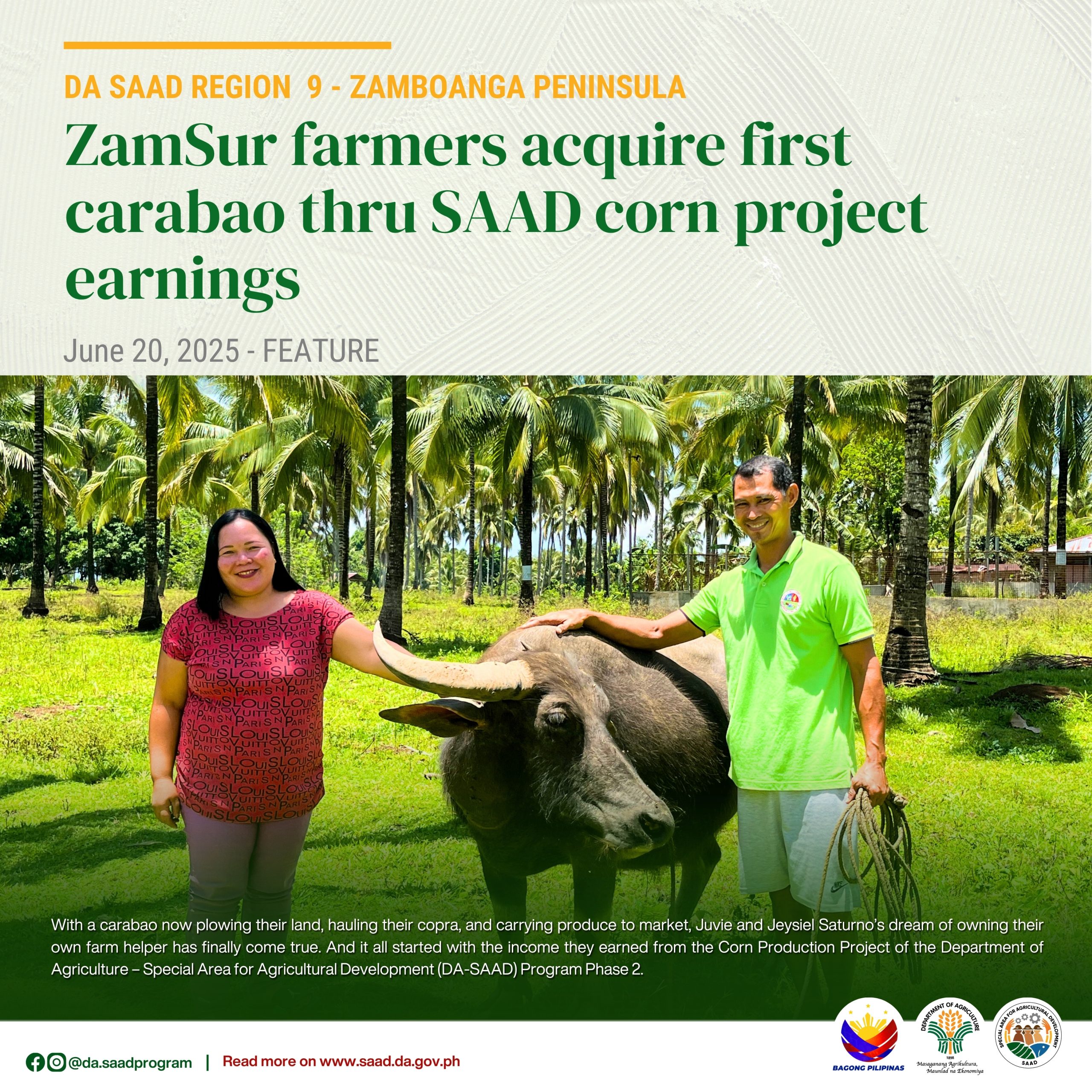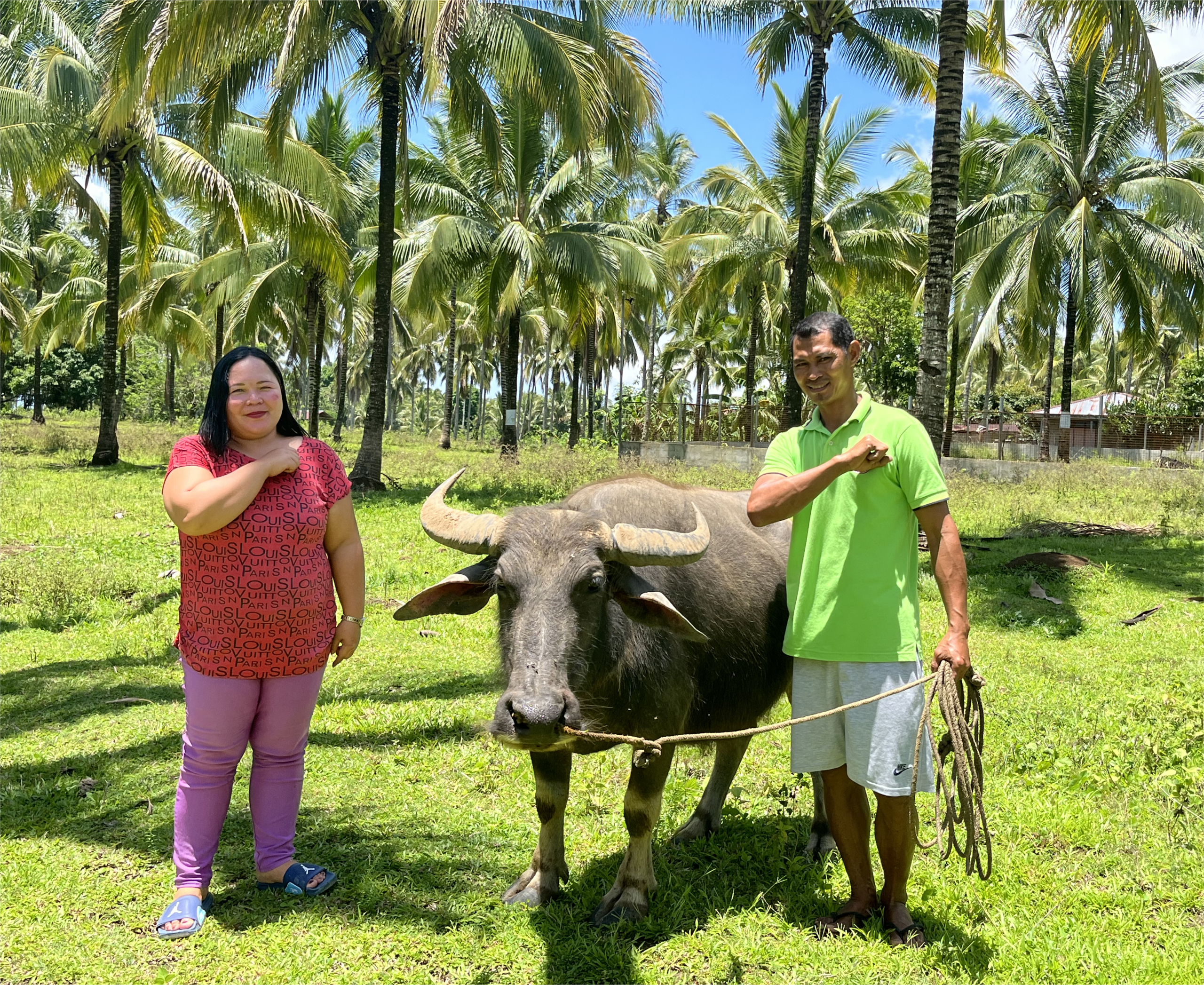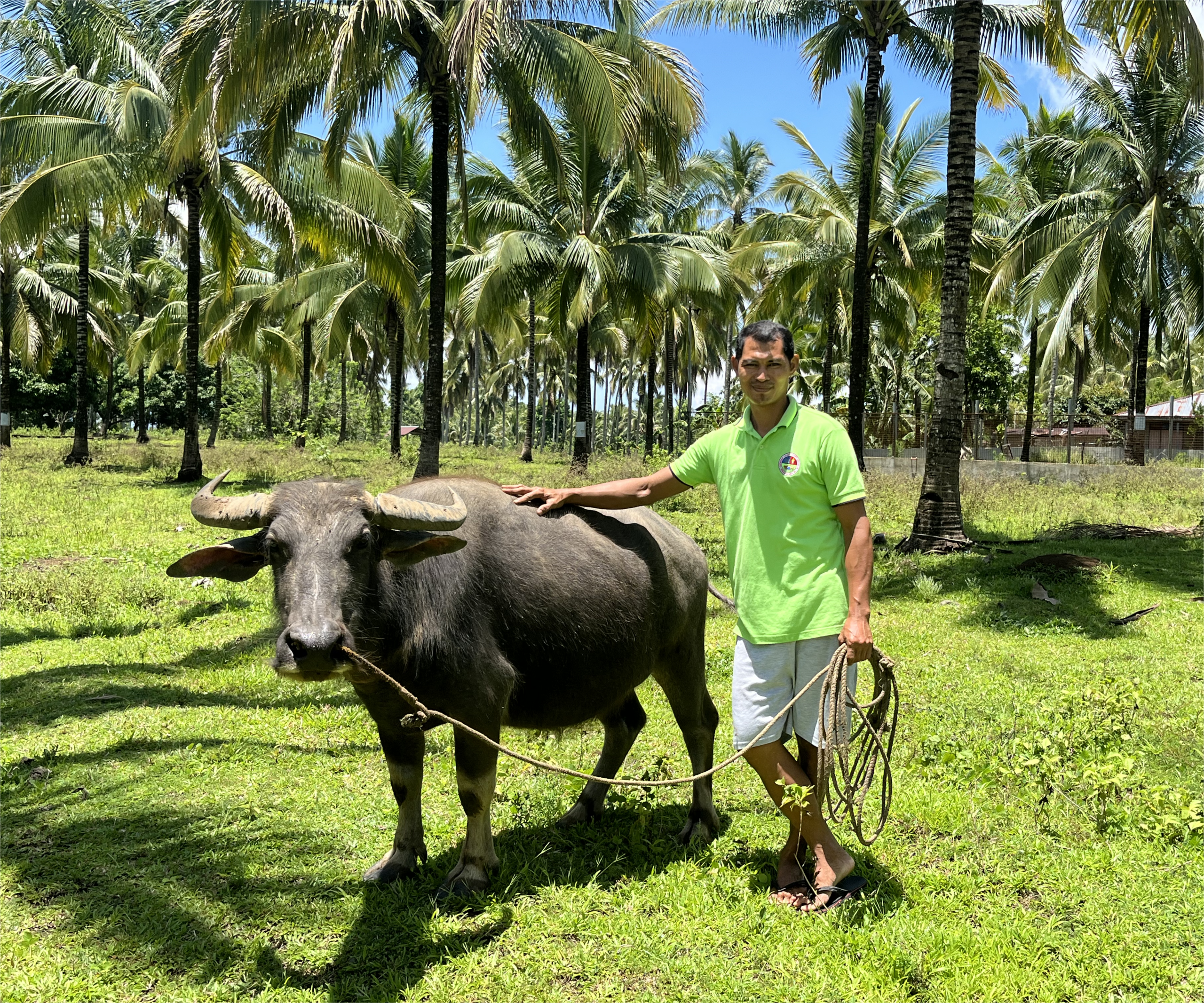With a carabao now plowing their land, hauling their copra, and carrying produce to market, Juvie and Jeysiel Saturno’s dream of owning their own farm helper has finally come true. And it all started with the income they earned from the Corn Production Project of the Department of Agriculture – Special Area for Agricultural Development (DA-SAAD) Program Phase 2.
“Sa una, sige ra mig gasto og ginagmay diri ug didto, hangtod mawala na lang ang kwarta,” Juvie shared. “Karon, napahimuslan rajud namo — ang kwarta gikan sa among mais, napalit gyud namo og kabaw. Makatabang na siya sa pagdaro human sa traktora, makadala sa among mga lubi, ug makakarga sa among produkto.”
(We used to spend little by little until the money was gone. Now, we’ve finally put it to good use — we were able to buy a carabao from our corn income. It helps plow after the tractor, hauls our coconuts, and carries our produce.)
Jeysiel is a member of the Kapamanok Rootcrops Farmers Association (KRFA) in San Pablo, Zamboanga del Sur. In 2023, the association became a beneficiary of the SAAD Phase 2 Corn Production Project.
Although she wasn’t among the initial 25 recipients, project resources were later extended to more members — including her. That single opportunity turned out to be life-changing not just for her, but for her entire household.
Before SAAD, the couple worked as tenants, farming a one-hectare lot where they received four parts of the harvest while the landowner took one. They planted mostly white corn and later shifted to yellow, but income remained unpredictable.
“Sukad pa sa akong pagkabata, mag-uuma na gyud mi,” Jeysiel shared. “Pero sauna, puti pa among gitanom nga mais. Bisan yellow na, gamay ra gihapon among kita.”
(We’ve been farming since childhood. We used to plant white corn, then switched to yellow, but we still earned little.)
When not in the fields, they found other ways to make ends meet by selling snacks, making skewered chicken innards, or working in copra. “Basta makakwarta lang, wala’y pulos nga adlaw nga sayang,” she said. (We just wanted to earn whatever way we could. No day should go to waste.)
In May 2024, the couple planted two bags of hybrid corn seeds across two hectares intercropped with fruit trees and coconut. By September 2024, they had harvested 56 bags of corn cobs, earning Php 31,300 — enough to buy their first carabao, which cost Php 30,000.
For their second cropping, they planted two more bags in two different fields. By January 2025, they harvested 152 bags of corn, grossing Php78,000 — a significant leap from their previous yields using recycled seeds.
Aside from seeds, the SAAD Program also provided access to fertilizers on a cost-sharing basis, with beneficiaries repaying only half after harvest.
“Ang binhi sauna, tag-Php3,000 hangtod Php5,000 kada bag. Karon, ang kwarta nga unta ipalit og binhi, amoa nang ipalit og abono,” she said.
(We used to spend Php3,000 to Php5,000 per bag of seeds. Now, we use that money for fertilizer instead.)
Their results speak of better yields, increased income, and more efficient farm operations — all anchored on a timely boost from the SAAD Program.
Today, the Saturnos tend to their new corn field planted just a month ago, eyeing another harvest this July.
“Dako kaayo og tabang ang SAAD sa among kinabuhi,” said Jeysiel. “Dili lang sa ani, kundi sa among panan-aw sa among kaugmaon.” (SAAD helped not just our farm, but the way we see our future.) ###


